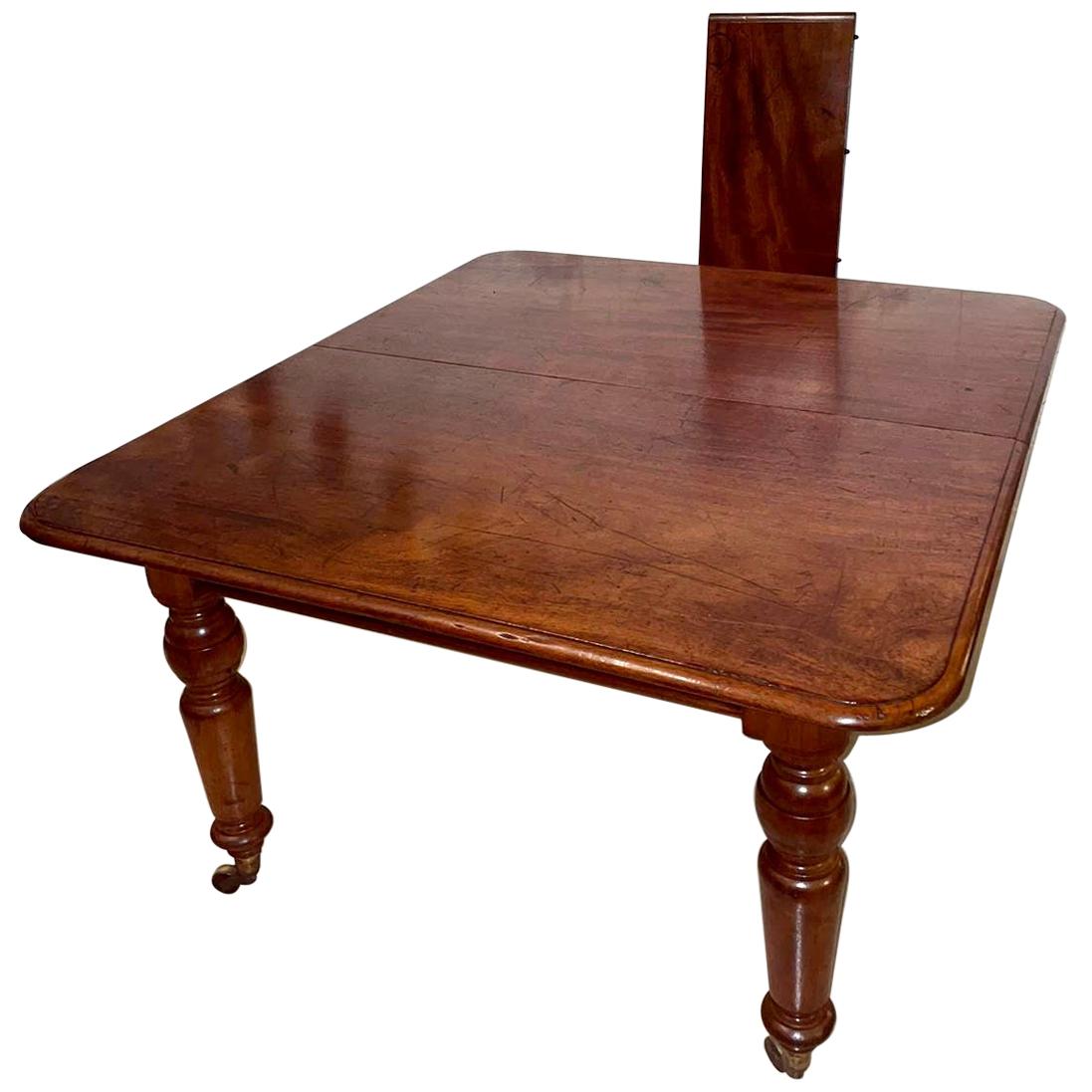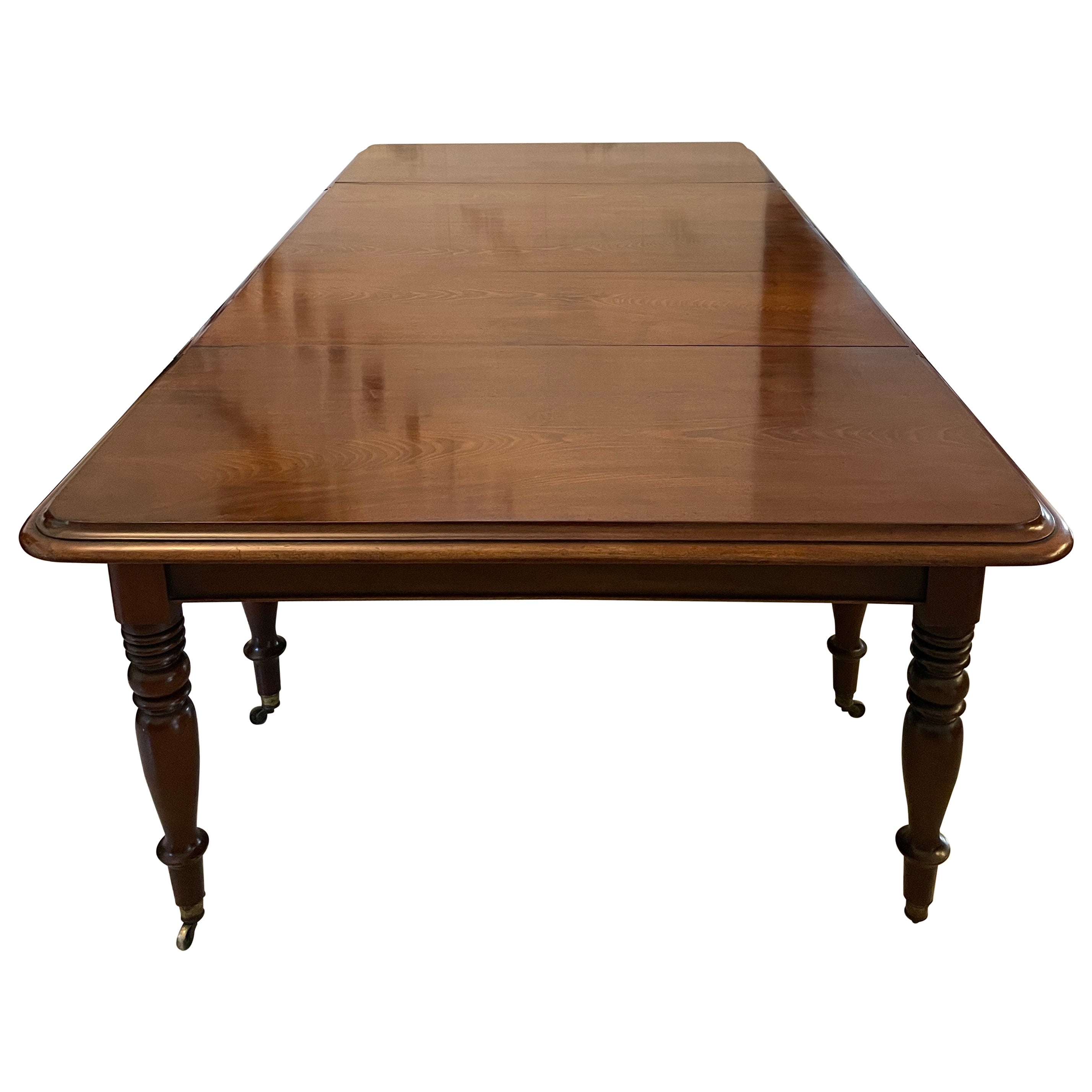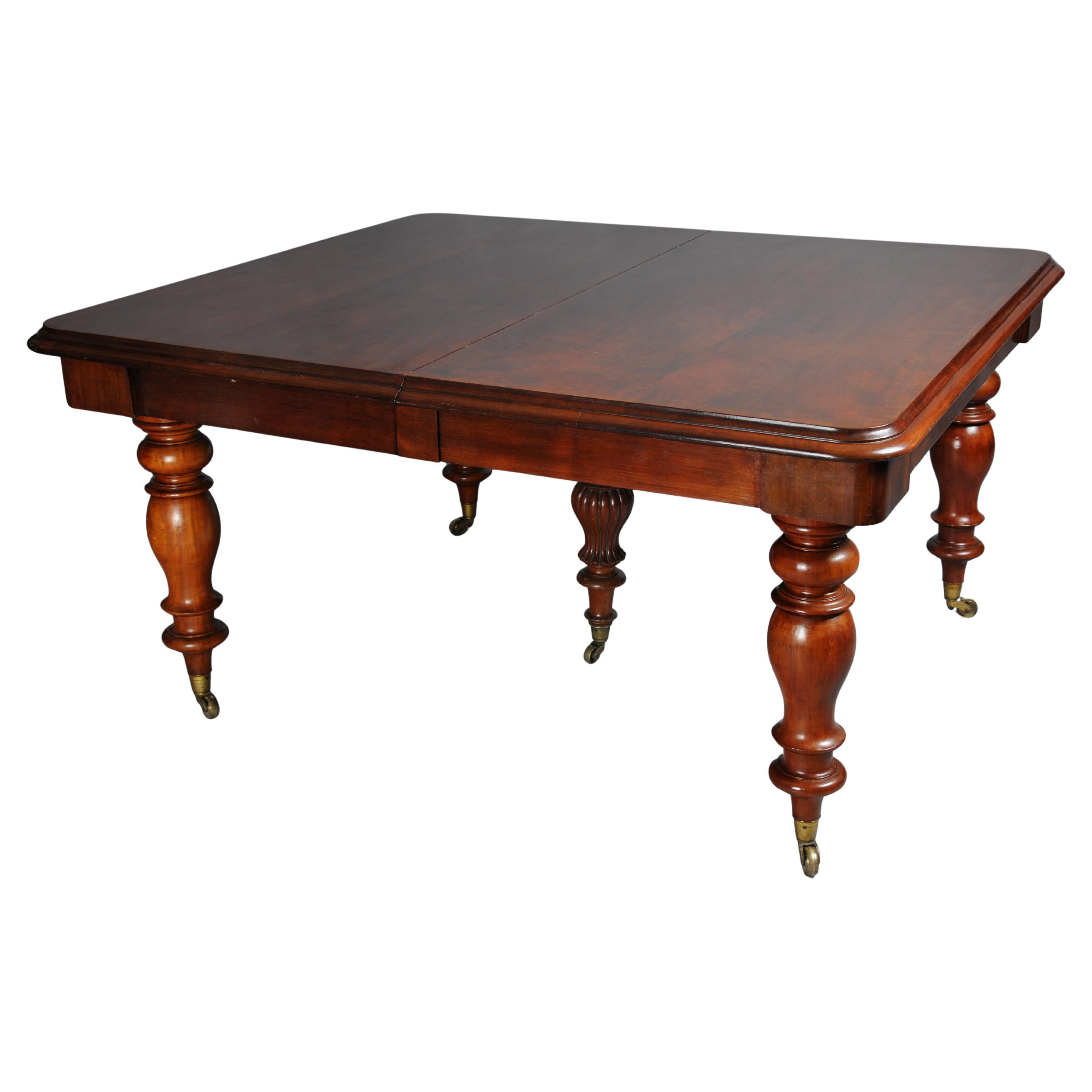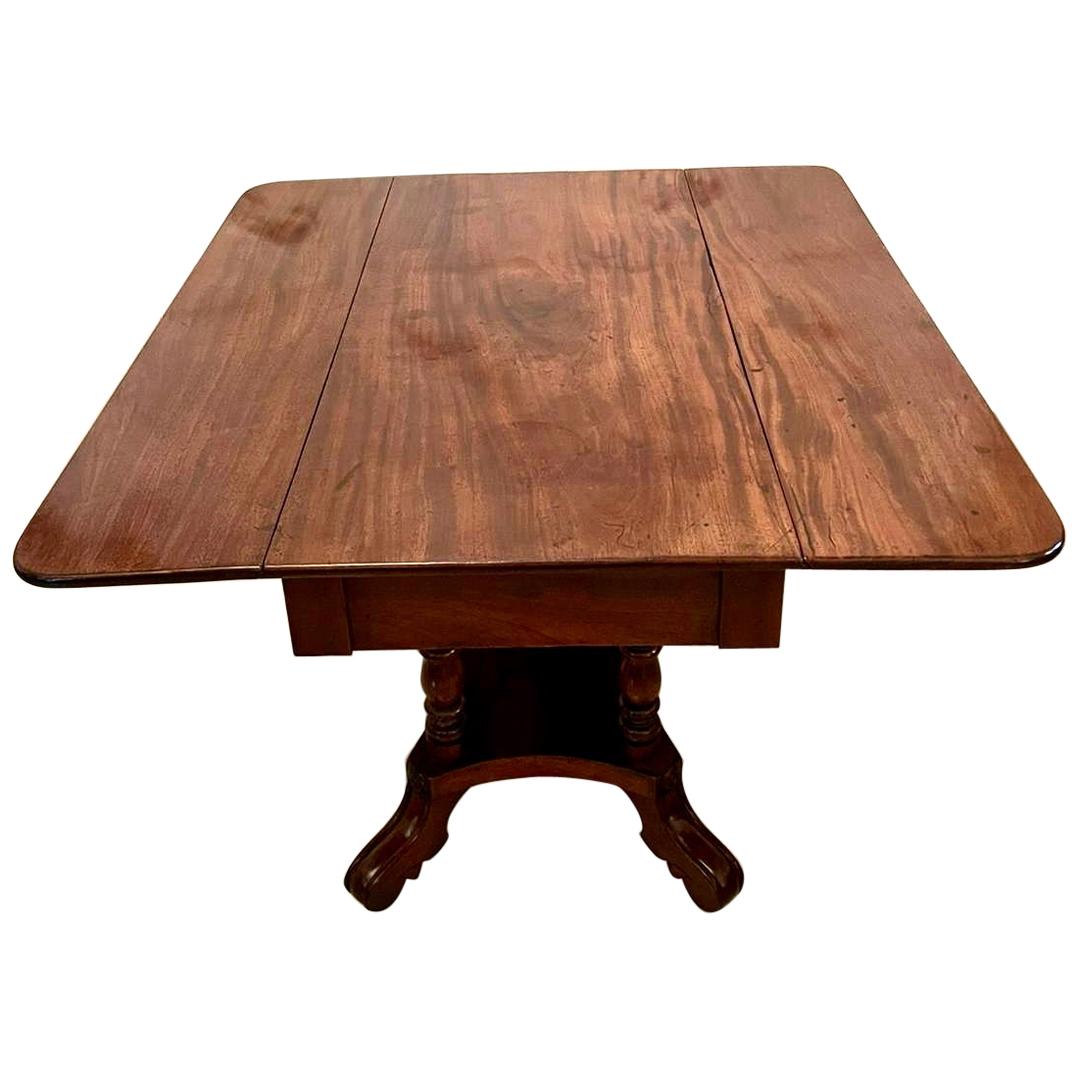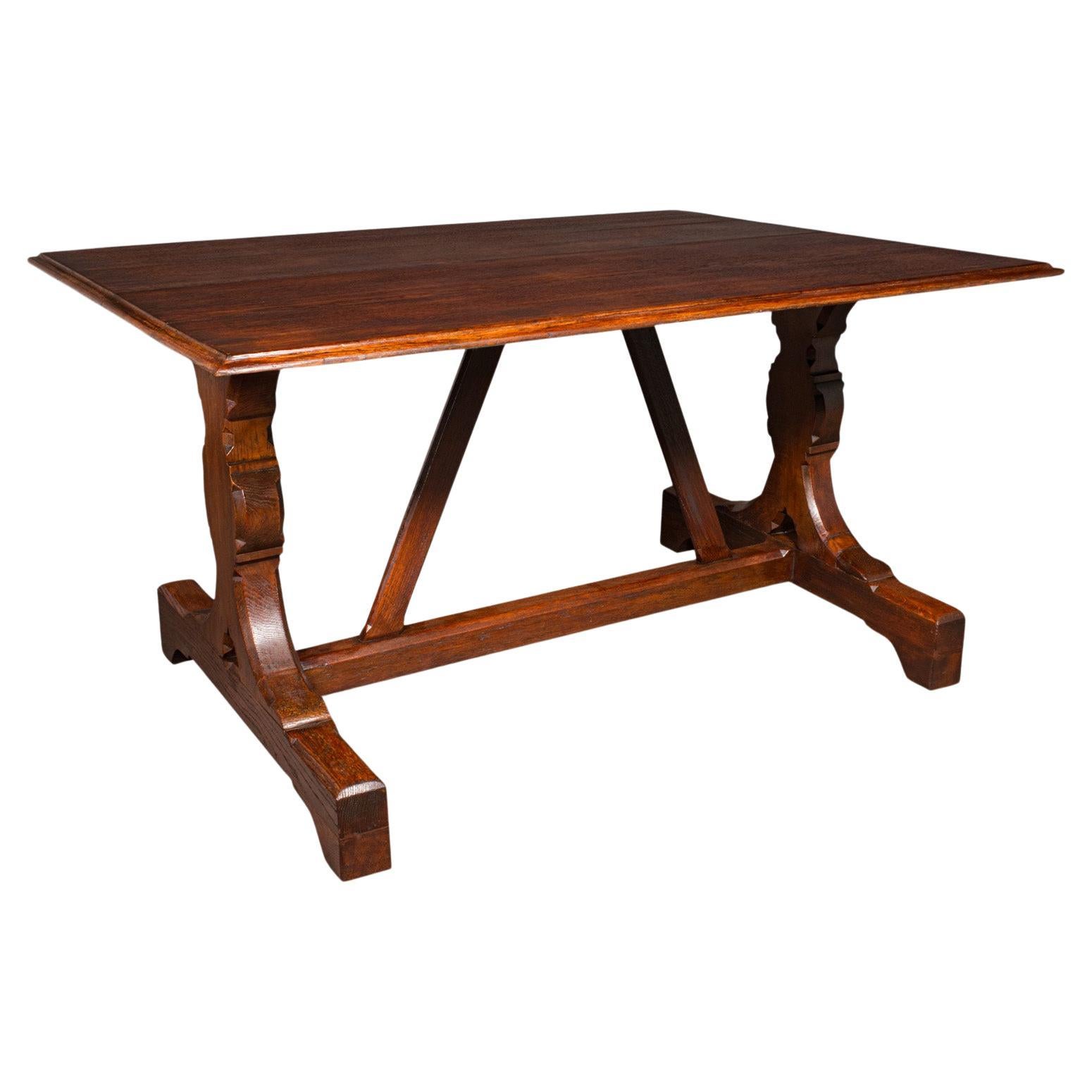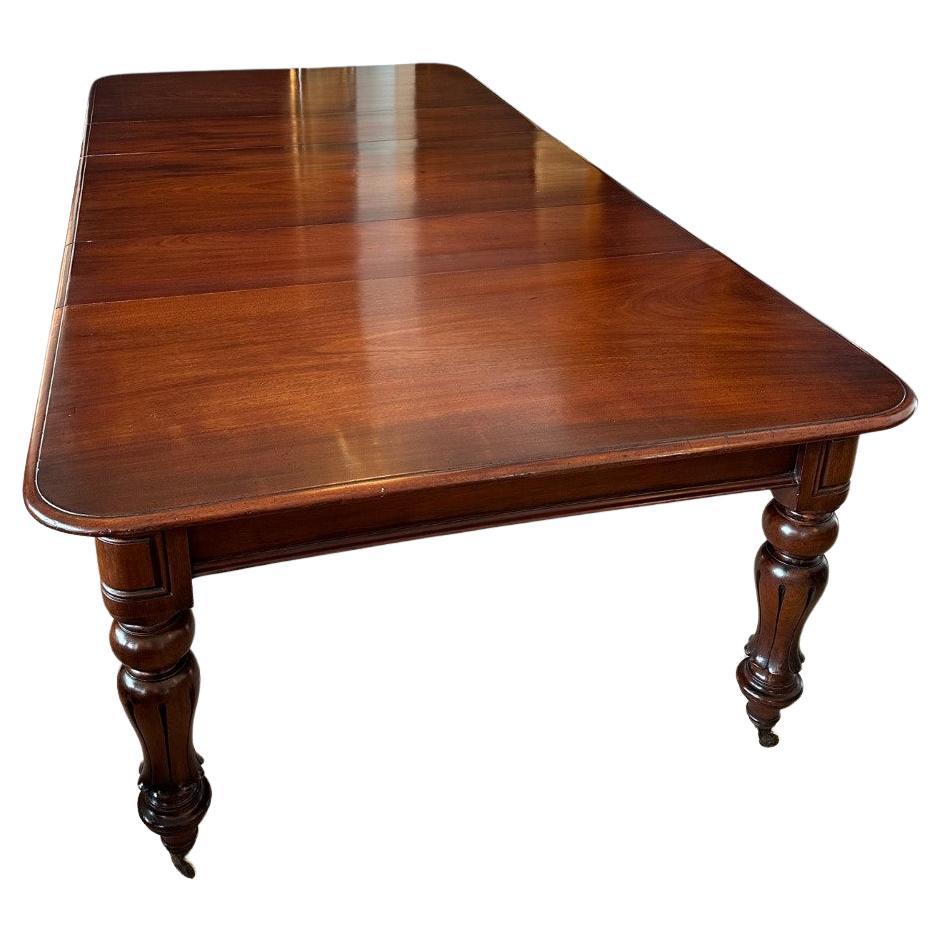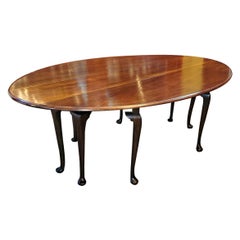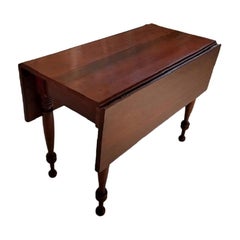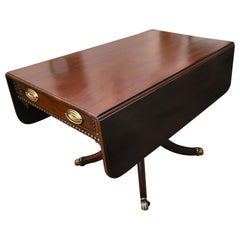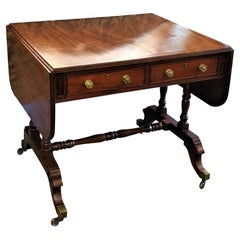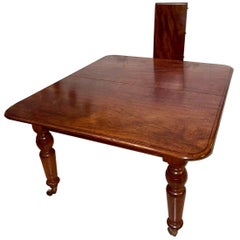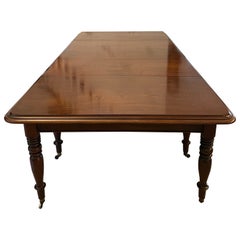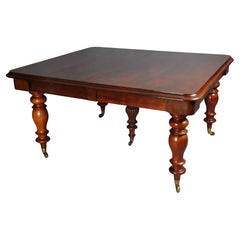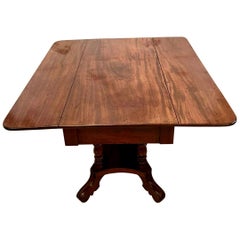Items Similar to 19th Century Irish Country Squire's Oak Telescopic Dining Table
Want more images or videos?
Request additional images or videos from the seller
1 of 12
19th Century Irish Country Squire's Oak Telescopic Dining Table
$4,800
£3,639.63
€4,175.90
CA$6,829.81
A$7,408.80
CHF 3,895.96
MX$90,150.16
NOK 48,705.81
SEK 45,935.56
DKK 31,178.41
About the Item
From circa 1860, five beautifully turned baluster legs on brass castors, beautiful oak patina on top with a high gloss finish.
It is very rare to find one of these made of solid oak, most were made from mahogany.
This leads us to the conclusion that this was most likely made for an Irish ‘Country Squire’ rather than a ‘titled’ person. It’s size is more suitable to a medium sized formal dining room and not a large one like in Manor Houses. Oak was also more affordable and easily sourced in the Countryside, than mahogany.
It has a beautiful octagonal shape.
The table has a telescopic mechanism to extend or shorten the table, you turn the mechanism to remove one or add a leaf and tighten up the table to make it smaller.
The mechanism works like the winding of a clock !
Unfortunately, we do not have the winding lever but the mechanism works perfectly using a simple socket.
This table has one re-movable leaf.
The table seats eight people comfortably.
Four support legs on the corners and one central support leg.
This table would grace the finest of dining rooms !
Provenance: Bought from a Estate/Manor House in Ireland.
Table knee clearance is 24.5".
Table Leaf width is 28.2".
- Dimensions:Height: 28.75 in (73.03 cm)Width: 46 in (116.84 cm)Depth: 88 in (223.52 cm)
- Style:High Victorian (Of the Period)
- Materials and Techniques:
- Place of Origin:
- Period:
- Date of Manufacture:1860
- Condition:Wear consistent with age and use. Very good original condition. One of two very minor cracks with age, but not noticeable. No winding key.
- Seller Location:Dallas, TX
- Reference Number:1stDibs: LU3978112095503
About the Seller
4.9
Gold Seller
Premium sellers maintaining a 4.3+ rating and 24-hour response times
Established in 2015
1stDibs seller since 2018
395 sales on 1stDibs
Typical response time: <1 hour
- ShippingRetrieving quote...Shipping from: Dallas, TX
- Return Policy
Authenticity Guarantee
In the unlikely event there’s an issue with an item’s authenticity, contact us within 1 year for a full refund. DetailsMoney-Back Guarantee
If your item is not as described, is damaged in transit, or does not arrive, contact us within 7 days for a full refund. Details24-Hour Cancellation
You have a 24-hour grace period in which to reconsider your purchase, with no questions asked.Vetted Professional Sellers
Our world-class sellers must adhere to strict standards for service and quality, maintaining the integrity of our listings.Price-Match Guarantee
If you find that a seller listed the same item for a lower price elsewhere, we’ll match it.Trusted Global Delivery
Our best-in-class carrier network provides specialized shipping options worldwide, including custom delivery.More From This Seller
View All19th Century Irish Country Squires Mahogany Hunt Table
Located in Dallas, TX
Presenting a gorgeous 19th century Irish country squires mahogany Hunt table.
This table was made in the late 19th century circa 1880, and is made of solid mahogany and sits on 8 legs with padded hoof feet.
2 drop leafs on either side supported by swinging gate legs on either side when upwards.
Beautiful interlocking detail to the side leafs and central section.
Oval in shape …. it would comfortably seat 8 people.
Made in Ireland.
This is a ‘Hunt’ table and not to be confused with an Irish ‘Wake’ table.
Whilst ‘Hunt Tables’ and ‘Wake Tables’ are similar in shape and design their original purposes could not be more different.
Wake Tables were made and used by indigenous Irish people for 2 purposes: (1) As a full functional dining table and (2) the central section had to be of sufficient width and length to support a coffin for the purpose of ‘waking’ the deceased in their home. Wake Tables were almost always made of oak, as this was the most common wood found in Ireland and therefore available to the ordinary (and poor) Irish Folk. Sometimes they might also be made of elm or sycamore.
Hunt Tables. however, we not made for the purposes of holding a coffin or ‘waking’ the dead. They were made for the ruling classes, nobility or gentry for the sole purpose of use on the day of the ‘hunt’. This would be the fox hunting season of Fall and Winter, where the participants in the ‘hunt’ would gather at the local manor house early in the morning and the snacks and refreshments would be displayed for eating and drinking on the ‘hunt’ table. Hunt Tables are almost always made of mahogany which was an expensive and exotic hardwood imported from Cuba and the West Indies. When not in use they would be put up against a wall with the leafs down and items would be displayed on top.
This table is obviously a ‘hunt’ table because: (1) It is made of mahogany (2) the central section is not wide enough to safely hold at coffin at rest.
We are of the firm opinion that this is in fact an Irish-made Hunt Table due top the legs and padded hoof feet which more closely resemble the feet one would find on an Irish Wake Table...
Category
Antique Late 19th Century Irish Georgian Dining Room Tables
Materials
Mahogany
$3,840 Sale Price
40% Off
Early 19C W Virginia/Kentucky Drop Leaf Table, with Provenance
Located in Dallas, TX
PRESENTING a VERY RARE Early19th Century Cherrywood Drop Leaf Table with Civil War Provenance.
Made, most likely, in the Ohio River Valley area, probably i...
Category
Antique Early 19th Century American Sheraton Drop-leaf and Pembroke Tables
Materials
Cherry
Late 18C Scottish Regency Large Pembroke or Library Table
Located in Dallas, TX
PRESENTING A SUPERB late 18C Scottish Regency Large Pembroke or Library Table.
Made in Britain, circa 1780-1810.
Made of beautifully patinated mahogany.
We can tell that this is a...
Category
Antique Late 18th Century Scottish Regency Drop-leaf and Pembroke Tables
Materials
Brass
Early 19th Century English Regency Sofa Table
Located in Dallas, TX
Presenting a stunning early 19th century English Regency sofa table.
Made from flamed mahogany, circa 1810-20.
Drop leaves on either s...
Category
Antique Early 19th Century English Regency Sofa Tables
Materials
Brass
18C Irish Georgian Mahogany Pembroke Table
Located in Dallas, TX
PRESENTING a GORGEOUS and early example of an 18C Irish Georgian Mahogany Pembroke Table.
GORGEOUS SIMPLICITY in this Mid-18th Century,
George II Period, circa 1760-80, mahogany ‘P...
Category
Antique Mid-18th Century Irish George II Drop-leaf and Pembroke Tables
Materials
Mahogany
Regency Fold over Side Table with Lions Paw Feet in the Manner of Gillows
By Gillows of Lancaster & London
Located in Dallas, TX
PRESENTING a STUNNING Early 19th Century British Regency Rosewood Fold-over Side Table with Lions Paw Feet in the Manner of Gillows.
‘Perio...
Category
Antique Early 19th Century English Regency Side Tables
Materials
Hardwood, Elm
You May Also Like
19th Century Victorian Antique Mahogany Extending Dining Table
Located in Suffolk, GB
19th century Victorian antique mahogany extending dining table having a quality mahogany extending top with a moulded edge, on...
Category
Antique Mid-19th Century European Early Victorian Dining Room Tables
Materials
Other
Rare Irish 12/14 Seater Metamorphic Antique Superb Quality Mahogany Dining Table
Located in Suffolk, GB
Rare Irish 12/14 seater metamorphic antique Victorian superb quality figured mahogany dining table
having a superb quality figured mahogany top with a doubl...
Category
Antique 19th Century Northern Irish Victorian Dining Room Tables
Materials
Other
English Extendable Dining Table, Mahogany, circa 1860
Located in Berlin, DE
English Extendable Dining Table, Mahogany, circa 1860
Solid mahogany with five turned columns, also made of solid mahogany. The dining table is extendable, with three additional sol...
Category
Antique 1870s English Dining Room Tables
Materials
Brass
$4,640 Sale Price
20% Off
19th Century Antique Regency Mahogany Drop Leaf Centre/Console Table
Located in Suffolk, GB
19th century quality antique Regency mahogany drop leaf centre table having an appealing quality mahogany top with two drop leaves, one drawer to the frieze and raised on four qualit...
Category
Antique Early 19th Century English Regency Drop-leaf and Pembroke Tables
Materials
Other
$2,332 Sale Price
20% Off
Antique Six Seat Country Kitchen Dining Table, English Oak, Refectory, Victorian
Located in Hele, Devon, GB
Our Stock # 25531
This is an antique six seat country kitchen dining table. An English, oak ecclesiastical or farmhouse table in Gothic revival taste, dating to the late Victorian p...
Category
Antique 1880s British Victorian Dining Room Tables
Materials
Oak
Large 19th Century mahogany dining table
Located in Eindhoven, NL
Large antique mahogany dining table suitable for 10 to 12 people with original extra leaves. Because it is a wind out table it can be set up in different lengths, the table stands on...
Category
Antique 1840s Dining Room Tables
Materials
Mahogany
More Ways To Browse
One Leg Table
Oak Victorian Dining Table
Irish Oak
Manor Oak
Marble Dining Table Knoll
Mcguire Bamboo Dining Table
Menhir Table
Oval Expandable Dining Room Table
Regency Walnut Dining Table
Wood Inlay 3 Leg Table
Black Walnut Pedestal Dining Table
Custom Round Dining Tables
Mcguire Glass Top Dining Tables
Monastery Furniture
Peg Tables
Pegged Table
Art Deco Oval Table
Dining Tables Gloss High
